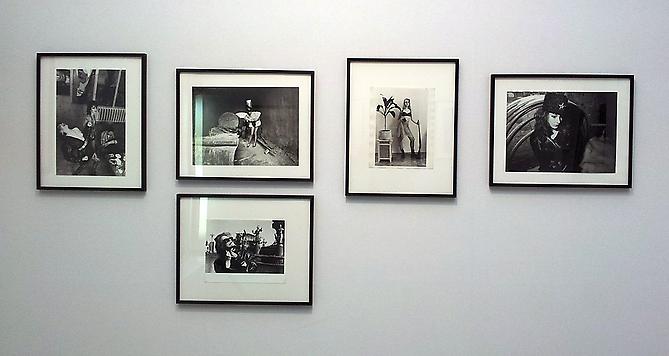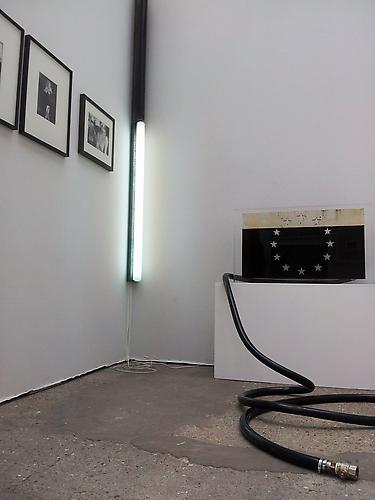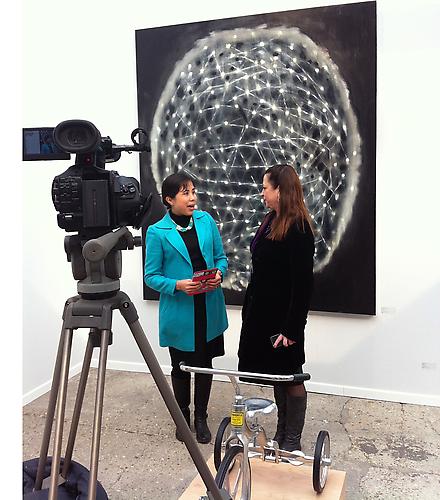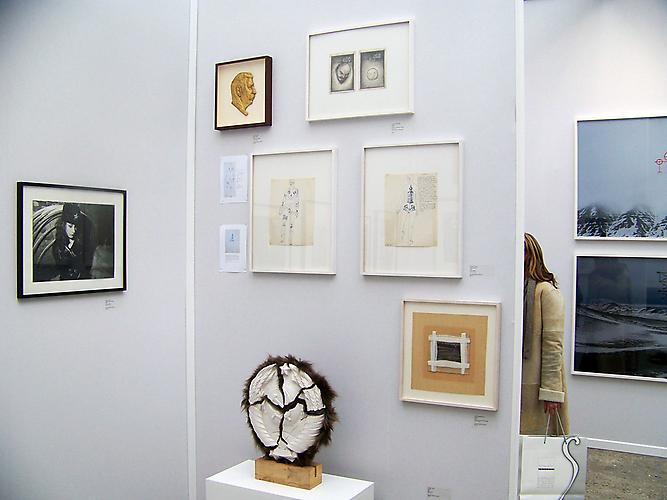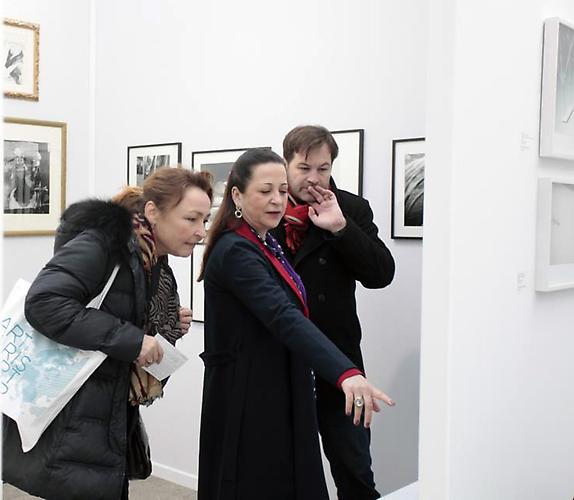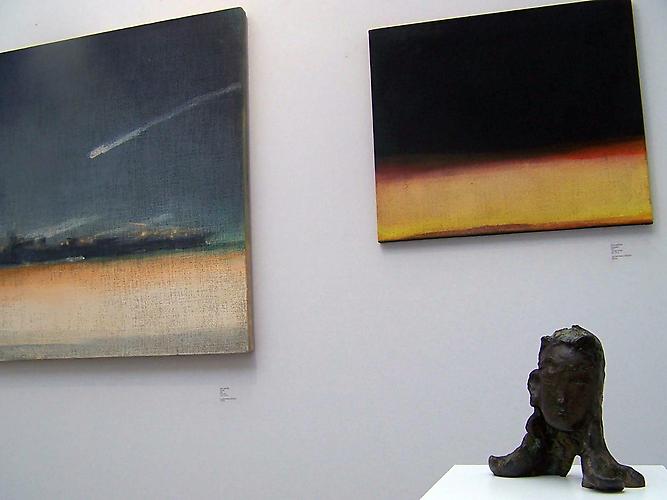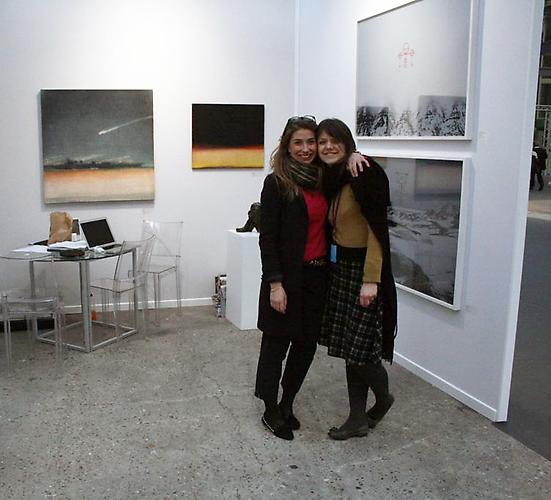ART PARIS ART FAIR 2013
Grand Palais, France
March 28th – April 1st, 2013.
At Art Paris Art Fair 2013, Galerie Priska Pasquer will be showcasing works by different contemporary artists in a variety of contemporary media. The exhibits show the progress within the arts that are being influenced by the general present change of media. The presentation includes works by Ross Bleckner, Philip Taaffe, Sherrie Levine, Rudolf Bonvie, Leiko Ikemura, Manfred Willmann, Leonid Sokov, Andrei Molodkin and other Russian artists
The paintings of Ross Bleckner reflect the impenetrability of reality. The blurred images in his “Birds” and “Flower” works, which bear witness to Bleckner’s interest in haziness and disillusion, conjure up indistinct forms, leaving the beholder to guess what images are being depicted. The large-scale “Brain” painting appears to show all nerve connections in a brain lighting up at the same time. Rather than focusing on the artist’s preoccupation with neurological disorders, which has its roots in his own personal life, it conveys the visual overstimulation inherent to 21st century life, with countless images emanating from a vast array of media.
The recent works of Rudolf Bonvie also deal with the deluge of images in the 21st century. In the work “Tumblr works”, he compiles diverse images found in blogs.
Philip Taaffe, whose body of work over the last 30 years has centred on various forms of abstract painting, is represented by some of his recent works. His 2009 painting “Epiphany”, which depicts mask-like heads combined with ornament-like shapes, illustrates his interest in anthropology and indigenous peoples and the relationship between the concrete and the abstract. The small-scale drawings from 2011 continue his studies in the “Floating Pigments” series, making use of paper marbling, a well-known book art technique from the 18th/19th century.
The three works of Leiko Ikemura come to life in the interface between Asian aesthetics and Western culture, exploring the fundamentally different perception of reality in Asian tradition, where there is no separation between figure and space, subject and object. The sculpture “Hairhead” (2006) and the two abstracted landscapes called “Warship” (2006) and “Landscape y” (2007) are exhibited.
Conceptual artist Sherrie Levine, a leadingfigure in the Appropriation Art movement whose recent exhibition at the Whitney Museum has received an appreciable feedback, is represented by the tricycle sculpture entitled “Hobbyhorse”. It evokes associations with Marcel Duchamp’s “readymades” while also calling to mind William Eggleston’s photography.
Photography is represented by the Japanese photographers Shomei Tomatsu and Rinko Kawauchi and the Austrian Manfred Willmann. His “Black Swan” shot in 1982 shows the animal in such an exaggerated virtuality that it almost appears to be unreal.
That reality had become awkward in the 80s of the 20th century is shown by the works of the Russian artists Leonid Sokov, Vladyslav Mamyshev-MONROE, Sergei Borisov, Maria Serebriakova and Pavel Pepperstein. Everday life seems to be grotesque and in the act of dissolving. A sculpture of Leonid Sokov demonstrates the break of hammer and reaping-hock (1990). The treatment of the political dimension of modern-day visual experiences is demonstrated by Andrei Molodkin’s sculptural objects, which transform industrial materials and light into aesthetic forms with titles such as “Euro-Flag” (2008) or “Neon-Oil” (2010).
The works featured by young Russian photo artist Tim Parchikov were created in Iceland, marrying vast snowy landscapes with Icelandic runes that are supposed to have enigmatic power.Artists shown:
SHERRIE LEVINE
PHILIP TAAFFE
LEIKO IKEMURA
RUDOLF BONVIE
MANFRED WILLMANN
LEONID SOKOV
‘MONROE’ (VLADYSLAV MAMYSHEV)
SERGEI BORISOV
MARIA SEREBRIAKOVA
PAVEL PEPPERSTEIN
ANDREI MOLODKIN
TIM PARCHIKOV
SHOMEI TOMATSU
RINKO KAWAUCHI
LIEKO SHIGA
At Art Paris Art Fair 2013, Galerie Priska Pasquer will be showcasing works by different contemporary artists in a variety of contemporary media. The exhibits show the progress within the arts that are being influenced by the general present change of media. The presentation includes works by Ross Bleckner, Philip Taaffe, Sherrie Levine, Rudolf Bonvie, Leiko Ikemura, Manfred Willmann, Leonid Sokov, Andrei Molodkin and other Russian artists
The paintings of Ross Bleckner reflect the impenetrability of reality. The blurred images in his “Birds” and “Flower” works, which bear witness to Bleckner’s interest in haziness and disillusion, conjure up indistinct forms, leaving the beholder to guess what images are being depicted. The large-scale “Brain” painting appears to show all nerve connections in a brain lighting up at the same time. Rather than focusing on the artist’s preoccupation with neurological disorders, which has its roots in his own personal life, it conveys the visual overstimulation inherent to 21st century life, with countless images emanating from a vast array of media.
The recent works of Rudolf Bonvie also deal with the deluge of images in the 21st century. In the work “Tumblr works”, he compiles diverse images found in blogs.
Philip Taaffe, whose body of work over the last 30 years has centred on various forms of abstract painting, is represented by some of his recent works. His 2009 painting “Epiphany”, which depicts mask-like heads combined with ornament-like shapes, illustrates his interest in anthropology and indigenous peoples and the relationship between the concrete and the abstract. The small-scale drawings from 2011 continue his studies in the “Floating Pigments” series, making use of paper marbling, a well-known book art technique from the 18th/19th century.
The three works of Leiko Ikemura come to life in the interface between Asian aesthetics and Western culture, exploring the fundamentally different perception of reality in Asian tradition, where there is no separation between figure and space, subject and object. The sculpture “Hairhead” (2006) and the two abstracted landscapes called “Warship” (2006) and “Landscape y” (2007) are exhibited.
Conceptual artist Sherrie Levine, a leadingfigure in the Appropriation Art movement whose recent exhibition at the Whitney Museum has received an appreciable feedback, is represented by the tricycle sculpture entitled “Hobbyhorse”. It evokes associations with Marcel Duchamp’s “readymades” while also calling to mind William Eggleston’s photography.
Photography is represented by the Japanese photographers Shomei Tomatsu and Rinko Kawauchi and the Austrian Manfred Willmann. His “Black Swan” shot in 1982 shows the animal in such an exaggerated virtuality that it almost appears to be unreal.
That reality had become awkward in the 80s of the 20th century is shown by the works of the Russian artists Leonid Sokov, Vladyslav Mamyshev-MONROE, Sergei Borisov, Maria Serebriakova and Pavel Pepperstein. Everday life seems to be grotesque and in the act of dissolving. A sculpture of Leonid Sokov demonstrates the break of hammer and reaping-hock (1990). The treatment of the political dimension of modern-day visual experiences is demonstrated by Andrei Molodkin’s sculptural objects, which transform industrial materials and light into aesthetic forms with titles such as “Euro-Flag” (2008) or “Neon-Oil” (2010).
The works featured by young Russian photo artist Tim Parchikov were created in Iceland, marrying vast snowy landscapes with Icelandic runes that are supposed to have enigmatic power.Artists shown:
SHERRIE LEVINE
PHILIP TAAFFE
LEIKO IKEMURA
RUDOLF BONVIE
MANFRED WILLMANN
LEONID SOKOV
‘MONROE’ (VLADYSLAV MAMYSHEV)
SERGEI BORISOV
MARIA SEREBRIAKOVA
PAVEL PEPPERSTEIN
ANDREI MOLODKIN
TIM PARCHIKOV
SHOMEI TOMATSU
RINKO KAWAUCHI
LIEKO SHIGA

